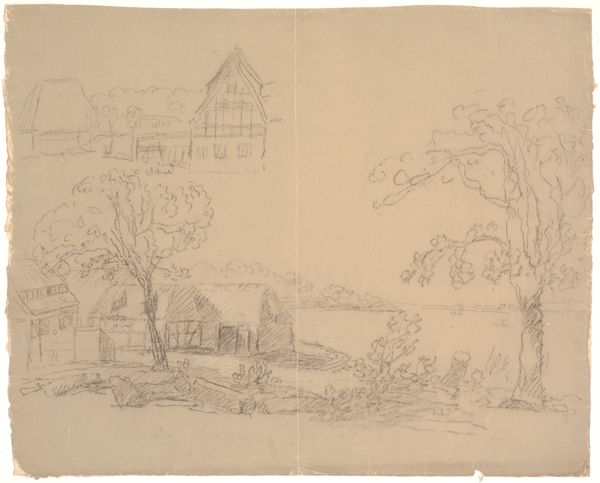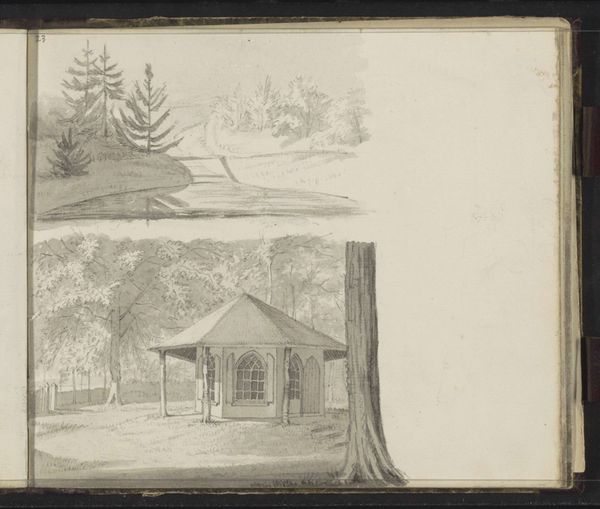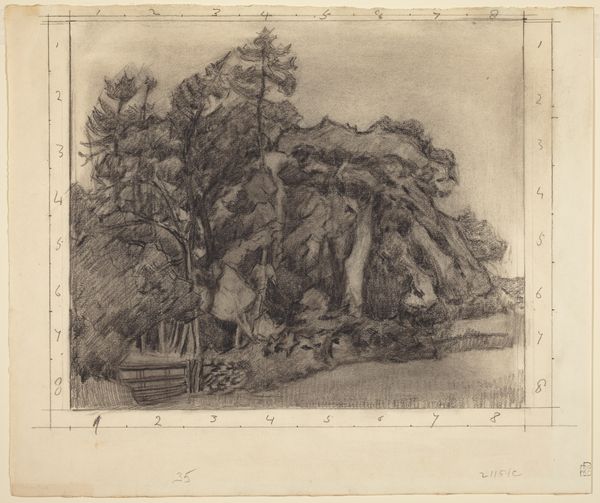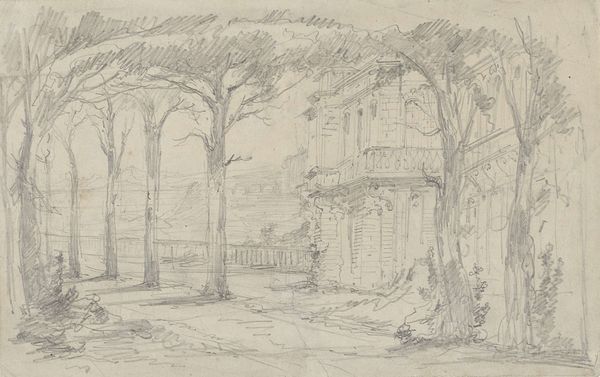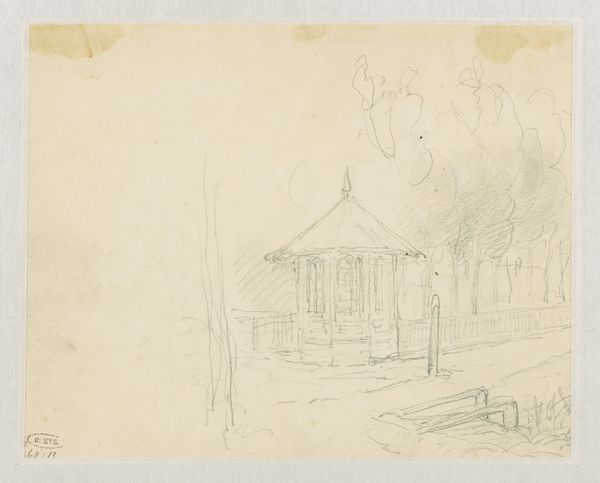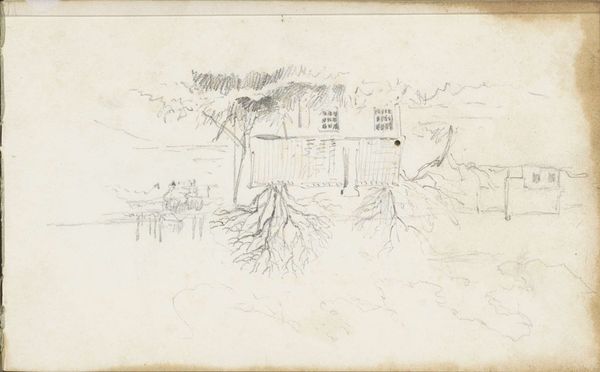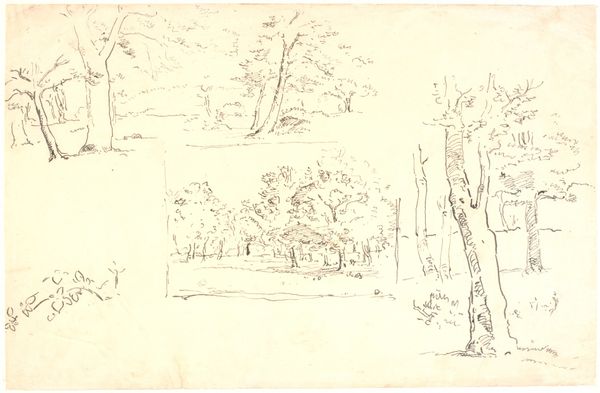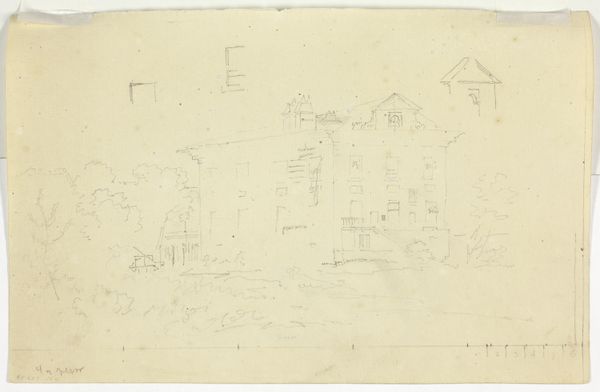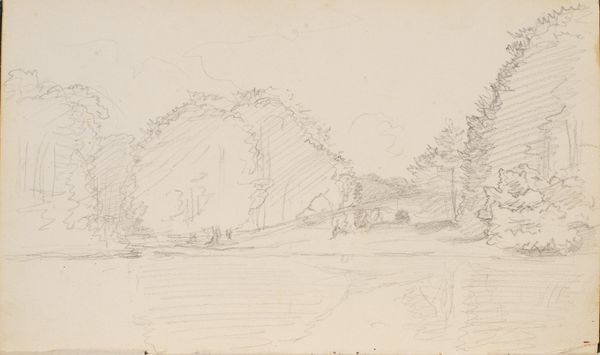
Copyright: Public Domain
Curator: This is “Putbus on Rügen,” a pencil drawing done on paper by Emil Rudolf Weiss around 1906. Editor: It feels dreamlike, doesn't it? That hazy rendering creates this atmosphere of quiet contemplation. It almost feels like peering into a memory. Curator: Weiss was very active in the German art scene. The shift from late 19th century stylistic tendencies to early expressionism informed how artists began to grapple with modern society. What you see in the foreground with this very defined architecture, that blends effortlessly into the unkemptness of nature. Editor: Absolutely. The dominating pine trees feel almost like silent observers overlooking a civilized space. Pine trees often carry the weight of memory and longing in visual symbolism. It is such a prominent feature, drawing one into a deeper consideration. What about its context made this symbolism particularly poignant? Curator: Well, beyond being a stunning nature scene, the isle of Rügen has enjoyed many political lives in German history, passing into the hands of different powers. And beyond a place of conflict, it grew into a destination for German tourists. So the pine, here, could almost be symbolic of place, community, and connection within the quickly-shifting social and political identity of early 20th century Germany. Editor: That makes a lot of sense. So many interpretations are swirling around in my head, considering these possible angles and contexts. Curator: That's the beauty of the piece, isn't it? Its ambiguity lets the viewer engage with these many concepts and possibilities within German life and German Expressionism, even today. Editor: A wonderful encounter. It certainly opens a door for greater historical thought.
Comments
No comments
Be the first to comment and join the conversation on the ultimate creative platform.

